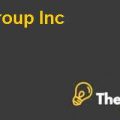
Genzyme / GelTex Pharmaceuticals Joint Venture
Introduction / Overview
GelTex and Genzyme were biotech companies in the United States. These companies used living organisms or their products to generate drugs. Genzyme was an established company; however GelTex was in its infancy stage.
Business Case
Both the companies sought mutual benefits in the proposed joint venture. Since, GelTex was at its early stages, it did not have enough capital to support itself. It also lacked sufficient marketing abilities to promote the new product to the market. GelTex was actually only a developer of products and did not manufacture them. It used the strategy of focusing on its core competency and outsourcing the tasks in which it was not efficient.
By using this strategy, GelTex managed to reduce its expenses and maximize profits with minimal capital needs.
On the other hand, Genzyme used the strategy of joint ventures and alliances to ensure its growth. The success and evolution of Genzyme is mainly the result of this strategy. Through this venture, It is seeking to extend its strategy to increase its earnings and expand into new markets. Along with that, it also has favorable views about the upcoming product of GelTex which is forecasted to be of high value and that targets a large segment.
Hence, the proposed venture under study will combine the capabilities of Genzyme and GelTex Pharmaceuticals to market GelTex’s first product, RenaGel. This resource sharing will benefit both the companies upon successful completion as expected. Usually, joint ventures between pharmaceutical firms and biotech companies opted for an unequal division of interests of 80:20 but Genzyme wanted to consider the possible benefits of a 50:50 balance of interests between the two.
Problem Statement / Issues
The launch of RenaGel had highly positive views and prospects for both the companies. However, there had been some uncertainties as well that hindered the possibilities of the venture. Genzyme had to view the positive and negative aspects of the deal in order to come to a conclusion of whether to proceed with the venture deal or to drop the idea.
Currently, with the most optimistic outcomes, the company has a positive NPV of $17.396 million. But in case the probabilities differ from what is expected to be the most likely outcome; then the attractiveness of the venture will be entirely different.
Hence, the Genzyme team needs to use different model to value the deal properly and propose the amount and timing of investment that is strategically fit with the company’s objectives and long term goals.
Situational Analysis
Genzyme had to list down all the possible strengths along with weaknesses of the companies involved and the venture before reaching any conclusion. This due diligence would prepare the companies for the worst outcomes so that they could develop contingency plans accordingly.
Strength Analysis
The core competency of GelTex i.e. development of the product and the completive advantage of RenaGel of being the first of its kind will be very beneficial for Genzyme. The upcoming product of GelTex that are under development, also have the tendency to attract the interest of these biotech companies. The products that are being developed by GelTex cater a wide target market. Thus, the products being developed by GelTex can essentially be placed in the profitable region.
The idea and strategy of GelTex was already able to raise funds from venture capitalists. The successful history of the company’s product provided a successful foundation of the positive future outlooks for it.
For this product, RenaGel, GelTex had already committed to a strategic alliance with two partners i.e. Chugai Pharmaceuticals for marketing and distribution in Asia, and Dow Chemical for the drug manufacturing. The possible joint venture between Genzyme and GelTex would concern only the U.S. and European markets. This acceptance from other partners assured the Genzyme that external parties were considering it as a positive investment.
Both the companies were culturally fit for each other and there were no such geographical distances or other problems that might affect the successful partnership between the companies. In fact, the synergies and resource sharing would enlarge the profitable region of the companies and made this deal even more attractive for both of them.
Potential Risks Involved
The first and foremost risk about which both the companies were concerned was the acceptance of the drug from the U.S. Food and Drug Administration (FDA). The treatment for kidney failure was in clinical trials upon which the approval from FDA was based. The decision of proceeding with the joint venture was highly dependent on the uncertainty of FDA approval, which was a major business issue. In the worst case scenario, the clinical trials would not be successful and FDA would not approve the drug launch. In such circumstances, both the company would lose all the invested capital in R&D and marketing, and they would have a high negative NPV..............................
This is just a sample partial case solution. Please place the order on the website to order your own originally done case solution.
In March 1997, the executive vice president of Genzyme to develop the conditions in which $ 518 billion (revenue) company will form a joint venture with a small biotechnology firm to make and sell a new drug. Problem, the decision maker must assess the cost of a new joint venture company, and recommend how much interest to the acquisition in the enterprise, and to determine what price to pay for that interest, and when. The case can be used to carry out some or all of the following purposes: (1) provide analytical methods, (2) the introduction of a framework for value creation and risk reduction, (3) investigating the effect on the value of the hidden options (staged investment), and (4) visualization of risk and its consequences.
This Darden study. "Hide
by Robert F. Bruner, Samuel E injury, Pierre Jacquet Source: Darden School of Business 14 pages. Publication Date: April 20, 1999. Prod. #: UV0086-PDF-ENG













